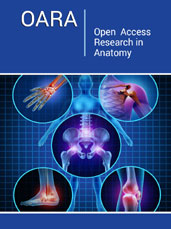- Submissions

Abstract
Perceptions in Reproductive Medicine
Dynamic Expression of Peripheral Blood microRNAs as Non-Invasive Biomarkers in Preimplantation and Pregnancy: A Systematic Review and Meta-Analysis
-
open or closeDalia Elmusharaf Khalifa1, Marwah Salem Bagabas2, Mosab Nouraldein
Mohammed Hamad3* and Fania Abdallah Elbadri4
1Embryologist, Imperial College Healthcare NHS Trust, UK
2PhD student, Imperial College London, UK
3Assistant professor of Microbiology, Excellence Research Centre, Elsheikh Abdallah Elbadri University, Sudan
4Associate professor, Obstetrics and gynaecology, Faculty of Medicine, Elsheikh Abdallah Elbadri University, Sudan
*Corresponding author:Mosab Nouraldein Mohammed Hamad, Associate professor, Obstetrics and gynaecology, Faculty of Medicine, Elsheikh Abdallah Elbadri University, Berber, Sudan
Submission: June 23, 2025;Published: July 23, 2025

Volume6 Issue3July 23, 2025
Background: MicroRNAs (miRNAs) are small, non-coding RNA molecules that regulate gene expression
and have shown potential as stable, non-invasive biomarkers in peripheral blood. Their expression
undergoes dynamic changes during embryo implantation and early pregnancy, making them valuable
candidates for predicting reproductive outcomes and identifying complications such as preeclampsia,
Recurrent Pregnancy Loss (RPL) and Small-for-Gestational-Age (SGA) births. These insights are
particularly relevant for improving Assisted Reproductive Technologies (ART).
Objectives: To systematically evaluate and synthesize current research on the dynamic expression
patterns of peripheral blood miRNAs in plasma and assess their potential as non-invasive biomarkers
during the preimplantation and pregnancy stages.
Methods: A systematic review and meta-analysis were conducted using ten peer-reviewed studies
published between 2020 and 2024. Studies were selected based on their focus on peripheral blood
miRNA expression and its relationship with reproductive outcomes. Extracted data included study design,
methodologies, patient characteristics, and outcomes such as pregnancy success, embryo transfer efficacy,
and complications including preeclampsia, RPL, and SGA births.
Results: The studies applied diverse miRNA detection techniques, including non-invasive culture medium
assays, genome-wide expression profiling, and analysis of circulating miRNAs. Differential miRNA
expression patterns were linked to specific reproductive outcomes. The findings indicate the predictive
value of certain miRNAs in ART success and pregnancy complications.
Conclusion: Peripheral blood miRNAs demonstrate dynamic expression changes during early pregnancy
and hold potential as predictive biomarkers for reproductive outcomes. However, methodological
variability across studies highlights the need for standardized protocols and further validation in larger,
diverse populations.
Keywords:microRNA (miRNA); Peripheral blood biomarkers; Pregnancy biomarkers; Assisted Reproductive Technology (ART)
Abbreviations: miRNA: microRNA; ART: Assisted Reproductive Technology; SGA: Small-for-Gestational- Age; RPL: Recurrent Pregnancy Loss; PE: Preeclampsia; DS: Down Syndrome; CI: Confidence Intervals; SE: Standard Error; ES: Effect Size
 a Creative Commons Attribution 4.0 International License. Based on a work at www.crimsonpublishers.com.
Best viewed in
a Creative Commons Attribution 4.0 International License. Based on a work at www.crimsonpublishers.com.
Best viewed in 







.jpg)






























 Editorial Board Registrations
Editorial Board Registrations Submit your Article
Submit your Article Refer a Friend
Refer a Friend Advertise With Us
Advertise With Us
.jpg)






.jpg)














.bmp)
.jpg)
.png)
.jpg)










.jpg)






.png)

.png)



.png)






